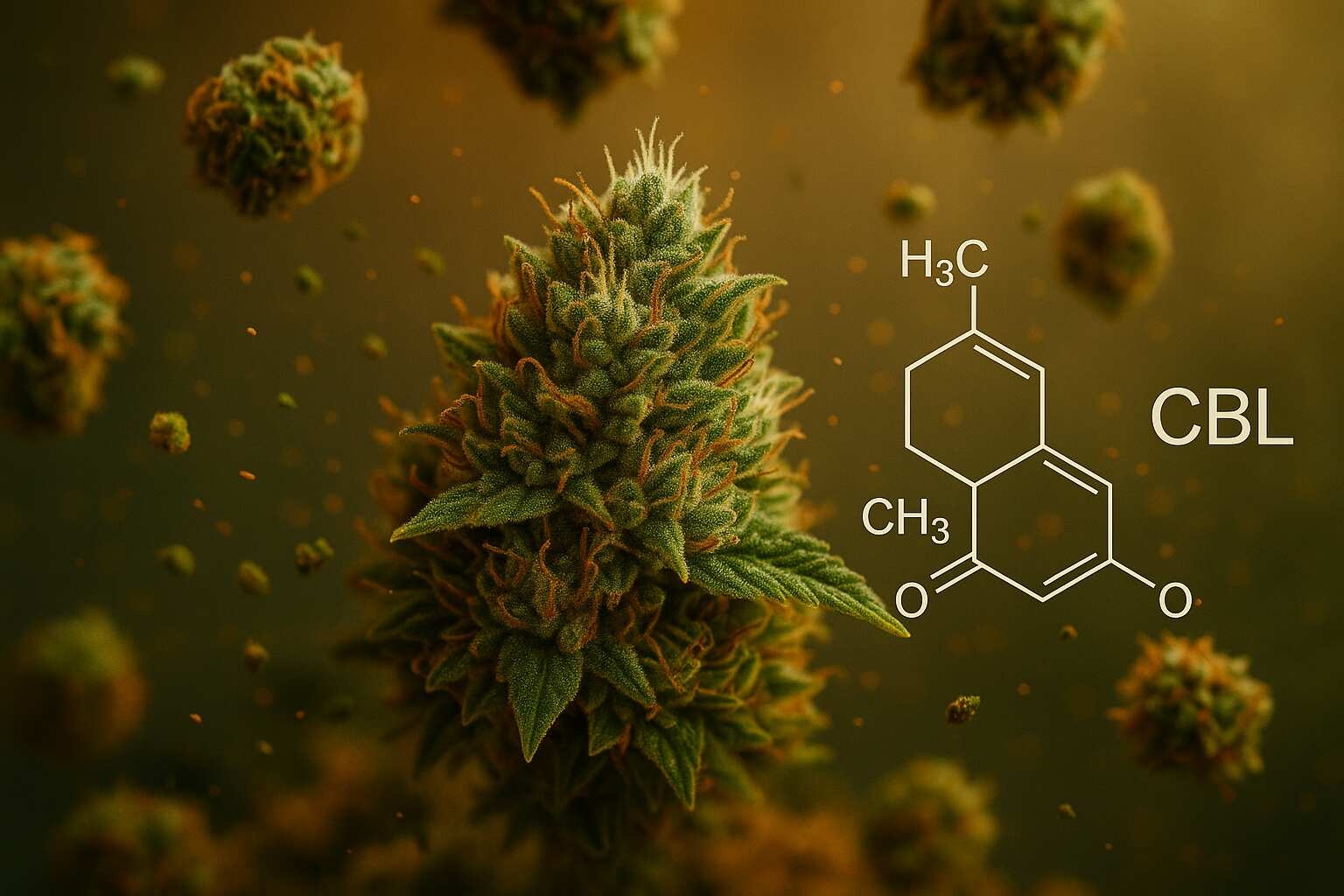What is CBL (cannabicyclol): effects, legality, and uses
Have you heard of CBL, also known as cannabicyclol? This rare cannabinoid from hemp is increasingly intriguing CBD enthusiasts. Less known than THC or CBD, CBL is nonetheless naturally present in the cannabis plant and is starting to attract genuine scientific interest. In this article, we explain in simple terms what CBL is, its potential effects, its legality in France, and in which products it can be found.
What is CBL?
CBL (cannabicyclol) is a naturally occurring cannabinoid found in hemp. It was discovered in 1964 by chemist Y. Gaoni, the same year as THC. Unlike THC, CBL is non-psychoactive, though it shares a similar chemical structure represented by the formula C₂₁H₃₀O₂.
CBL is considered a “secondary” compound because it appears as a result of the natural transformation of other cannabinoids, particularly through the degradation of CBN (cannabinol) and CBC (cannabichromene). This explains why it is found only in very small amounts — typically less than 1% — in the hemp plant.
CBL is not directly produced by the plant but often results from the degradation of THC over time or under light exposure. This is one reason it is more commonly found in older or poorly preserved cannabis varieties.
How is it produced in hemp?
In the hemp plant, CBL is not one of the “primary” cannabinoids like CBD or THC. It forms through slow chemical reactions that naturally occur over time. As a hemp flower ages, some compounds oxidize and transform. CBL then appears as a result of the degradation of CBC, a structurally similar cannabinoid.
This also explains why it is often found in trace amounts in dried CBD flowers or in so-called “full spectrum” extracts. These extracts retain the full range of hemp molecules, including the rarer ones like CBL, CBG, and THCV.
What are the effects of CBL?
To date, CBL is still under research. It hasn’t been studied as extensively as other cannabinoids such as THCP or CBD, but early observations suggest it may play a role in the entourage effect — the synergy between the various compounds in hemp.
Preliminary studies indicate that CBL may interact with CB2 endocannabinoid receptors, which are involved in regulating inflammation and the immune system. However, there are no clinical results yet confirming any direct therapeutic effects.
Overall, CBL is believed to help modulate some effects of CBD and CBN, particularly by promoting a sense of balance and relaxation. Its neutral profile makes it an interesting molecule for full-spectrum CBD oils.
What is the legality of CBL?
In France, legislation does not specifically mention CBL. However, since it has no psychoactive effects and is naturally present in hemp, it is considered legal as long as it is extracted from authorized varieties and the final product complies with regulatory THC limits.
In short, if a CBD product contains natural traces of CBL, it remains legal as long as the total THC level stays below the authorized limit (0.3%). This applies, for example, to hemp oils or CBD flowers derived from legal varieties grown in Europe.
How is CBL used in CBD products?
Today, CBL is not yet available as an isolated compound, as its natural concentration in hemp is very low. However, it is frequently found in so-called “full spectrum” products, such as certain full-spectrum CBD oils or natural resins. These formulations allow users to benefit from the entire range of cannabinoids, including trace amounts of CBL, for a more complete and harmonious effect.
It can also be found in trace amounts in raw extracts, waxes, or distillates used in the production of premium CBD oils. CBL acts as a subtle complement, not altering the sensory experience but possibly contributing to the chemical richness of the product.



